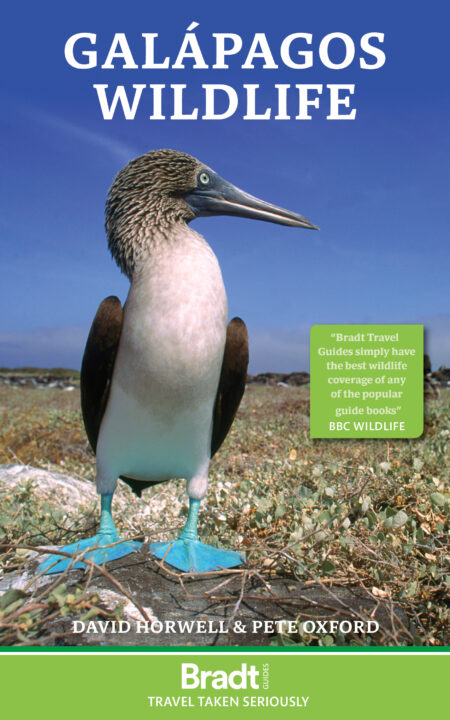Our Galápagos expert gives an insight into snorkelling and scuba diving in the Galápagos.
The underwater world in Galápagos is as beguiling as that on land, with diverse marine life and steep walls of lava that disappear into the depths. For travellers seeking adventure beneath the water, these snorkelling and diving spots deserve a place on the bucket list.
Scuba diving
The Galápagos are a world-class dive destination. At present it is not permitted to dive from regular natural history cruises, unless an arrangement has been made with a local dive shop to do this instead of some land visits. Serious divers can book on diving-only cruises with specialist operators. These will visit the two far-flung islands of Darwin and Wolf, which are challenging but rewarding dive sites, with huge schools of hammerhead sharks.
If you are on a hotel-based holiday, day-trip diving can be arranged on Santa Cruz and San Cristóbal islands through local dive shops.
Where to go
Española
Gardner Bay
Gardner Bay is one of the longest beaches in the Galápagos (2km). Its white coral sand is dazzling; sunglasses and a hat are a must, and shoes are needed to stop the sand burning your feet!
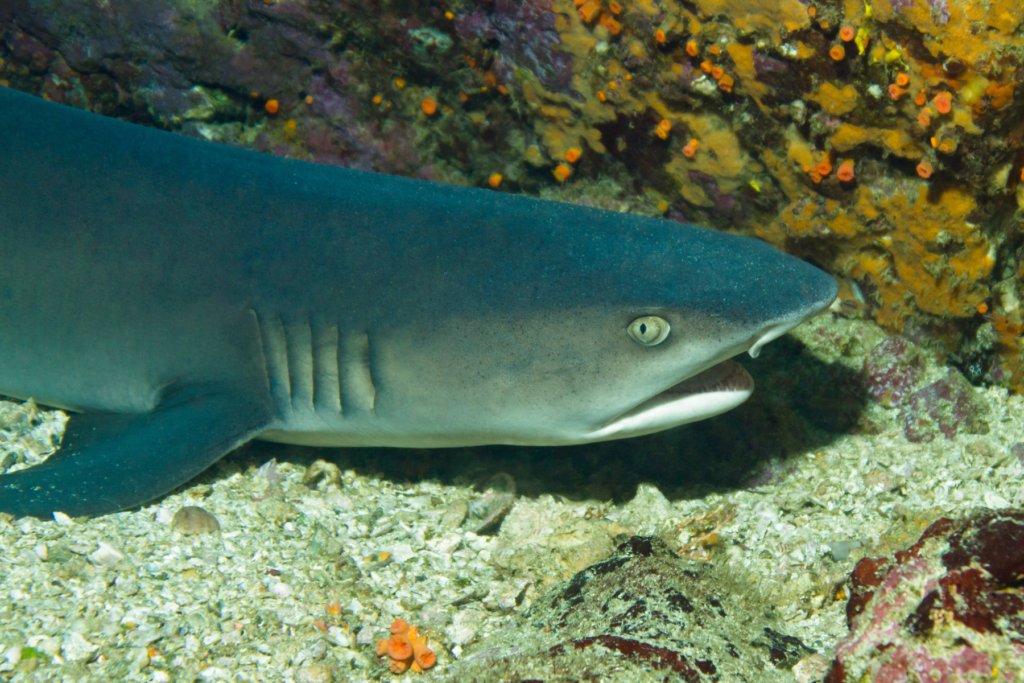
Though snorkelling off the beach sands is not good, the islets scattered throughout the bay are an excellent choice for visitors seeking close encounters with underwater wildlife. Expect schools of yellow-tailed surgeonfish and, if you’re lucky, the odd white-tip reef shark.
Floreana
Punta Cormorant
The large, brackish lagoon of Punta Cormorant is famous for its role as home to one of the biggest populations of flamingos in Galápagos. If you are quiet you may find one approaches within 5m of you. The adults parade around like regimental soldiers. Using binoculars you can find other wading birds, including black-necked stilts, whimbrels, willets, ruddy turnstones and phalaropes.
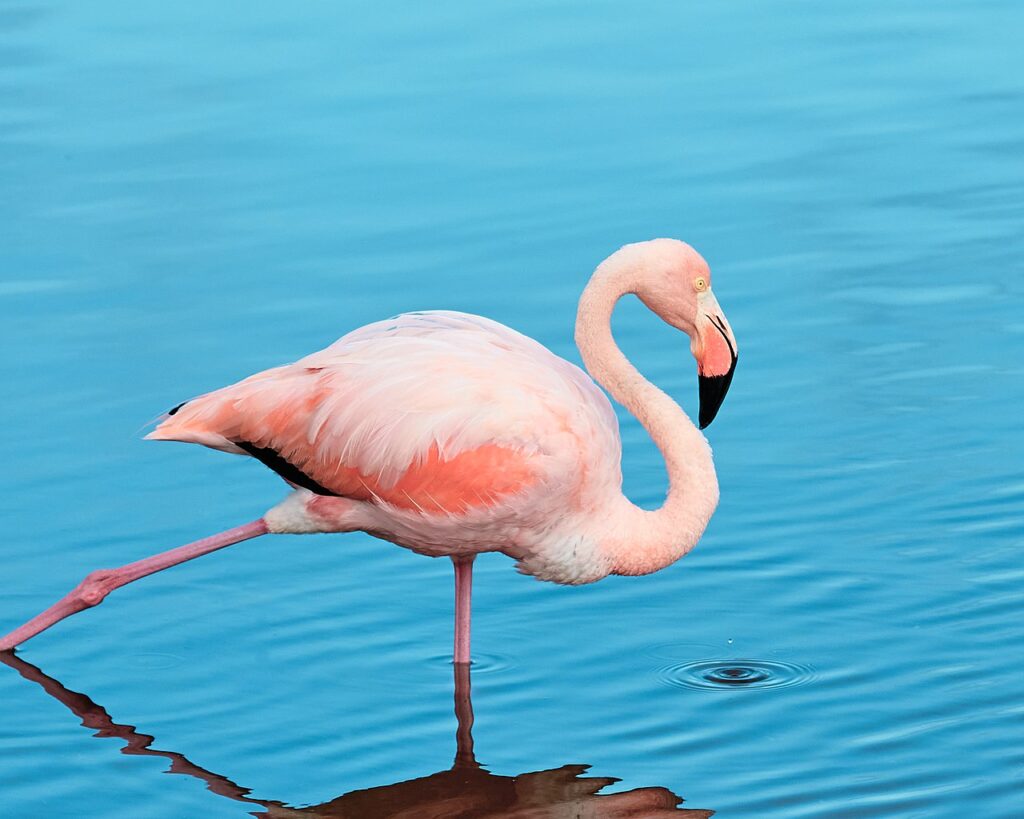
While it’s the lagoon’s perfectly-pink residents that put it on the map, Punta Cormorant is also popular with snorkellers. Novices can practise on the main beach (where the local sea lions are fairly quiet), refining their skills before seeking out more challenging spots elsewhere on the islands.
Devil’s Crown
For those with snorkelling experience, the nearby islet of Devil’s Crown (Onslow Island) is a must-visit. This sunken cinder cone has been filled by the sea, so the water is shallow inside but steep and deep outside.
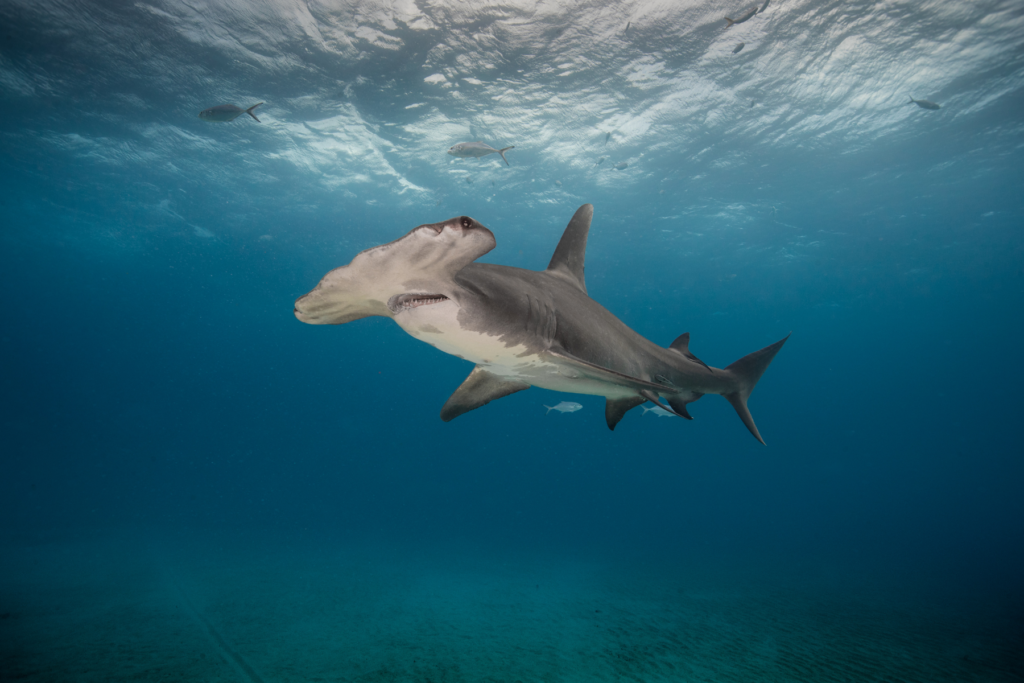
Corals abound with reef fishes such as parrotfish and larger fish such as palometas school outside the crater. Travel through the underwater caves that link the two (but beware of strong currents if you attempt to free-dive through them) and you might also meet a hammerhead en route!
Genovesa
Darwin Bay
Darwin Bay is a paradise for wildlife enthusiasts. Yellow-crowned herons wait in the rocks, white-cheeked pintails occupy the lagoon and Galápagos doves go about their business on the ground. Taking in the sight of these animals up close, and walking westward along the sand, you will come across a fissured ridge of lava through which the sea filters.
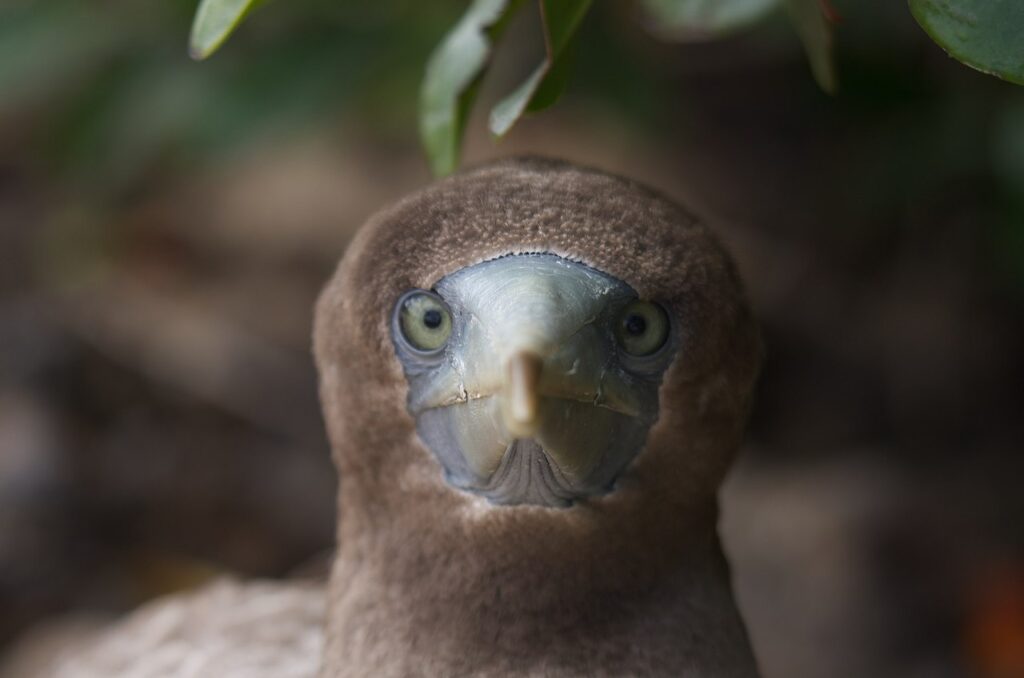
At high tide much of the trail is underwater, and you have to wade a few metres. Swallow-tailed gulls favour this ridge to bring up their chicks; they warn off any visitors who get too close. On the other side of the trail, great frigatebirds nest on the saltbush, sharing the bushes with red-footed boobies. Snorkelling along the rocks either side of the beach can be exciting, with strong surf but poor visibility.
Isabela
Tagus Cove
The steep-sided cove, named after a British warship that came here in 1814, is an impressive natural harbour and a favourite among underwater adventurers.
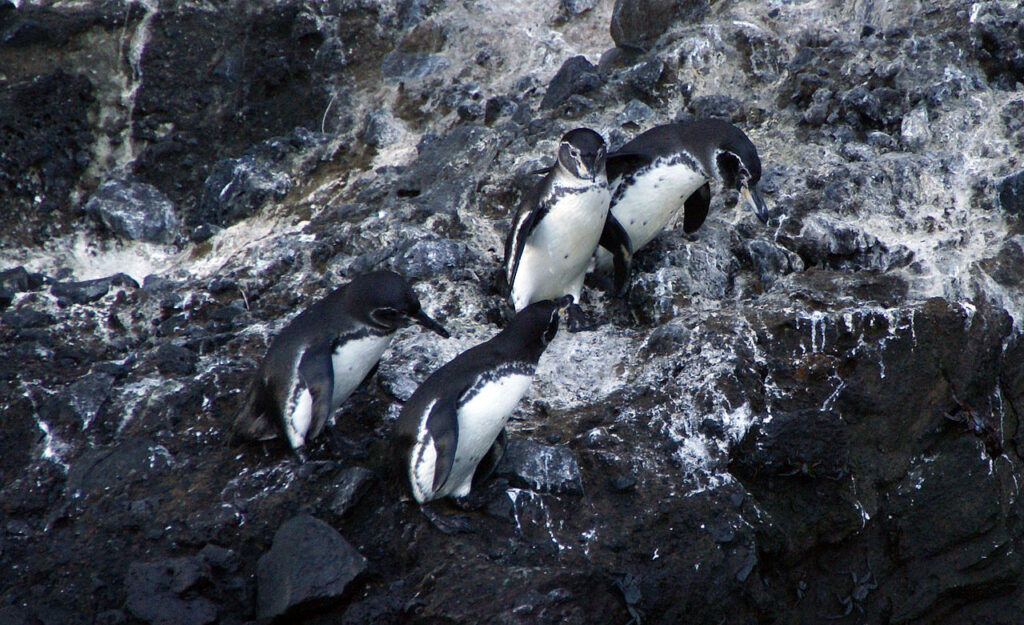
Tagus is a favourite place to take a panga ride along the coast. The sandy-coloured cliffs are colonised by marine iguanas, penguins, crabs, sea lions, and, in the crevices outside the bay, colonies of brown noddies, making it a fascinating place to snorkel or scuba dive.
Los Túneles (El Finado and Cabo Rosa)
A tour to Los Túneles from Puerto Villamil takes you to a spectacular site for snorkelling or scuba diving. Lava flows have formed a labyrinth of arcs and tunnels below and above the water. When entering the site, the waves can be strong, but once inside the water is calm and clear.
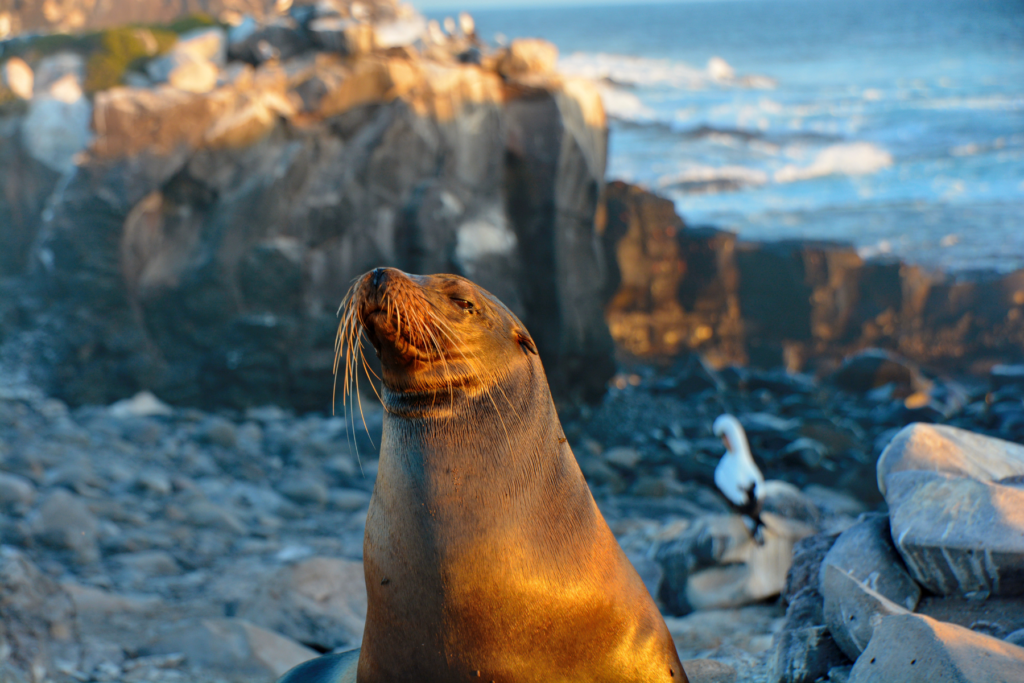
Expect to see a variety of life in the water: colourful fish, green turtles, octopus, seahorses, rays, and white-tip and Gálapagos sharks. Swimming through the rock formations is a unique experience. Above, you can see dancing blue-footed boobies, frigatebirds and sea lions. The best time to visit is between January and May.
Rábida Island
The bright red beach (a wet landing) is made of sand eroded from cinder cliffs to the west. The beach is backed by saltbush, which hides a saltwater lagoon surrounded by black and white mangrove trees. Visitors usually walk first along the beach, as pelicans sometimes nest there on the saltbush. Young brown pelicans can be seen plunge-diving in the sea, looking clumsy alongside groups of blue-footed boobies.
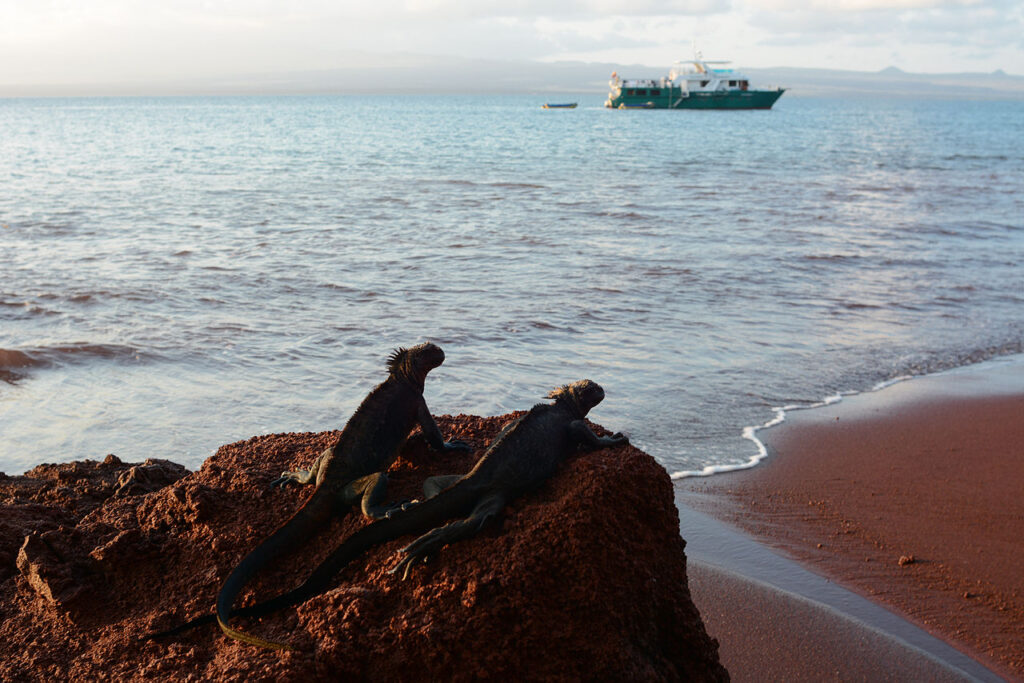
Back on the beach, the rocks to the east make a perfect place to learn to snorkel. Schools of reef fish like damsels, sturgeons, triggers and larger groupers and pufferfish make this an attractive place to plunge beneath the waves. There is little current as long as you do not swim out beyond the point. You may even see a pelican fishing underwater.
San Cristóbal
Punta Pitt
In the extreme northeast of San Cristóbal, this popular snorkelling site affords the chance to see all three species of booby. The landing is wet, on a green sand beach where you will receive the usual sea lion welcome. The trail climbs up the side of a steep tuff cliff, the slopes of an eroded volcanic cone; it’s quite an energetic up-and-down trail, but the views will beckon you on.
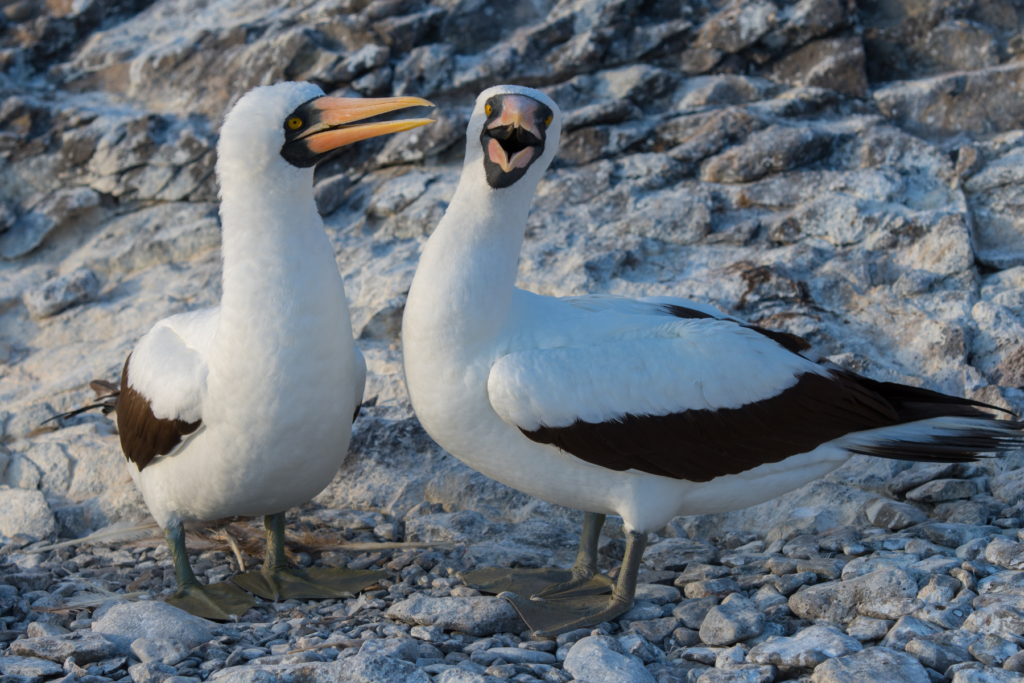
Frigates can be seen in the palo santo trees, while red-footed boobies prefer the yellow-flowered Cordia lutea and smaller trees. Nazca boobies and blue-foots stake claims on the ground, with the Nazca boobies closer to the cliff edge. The trail has a loop near the end where the succulent sea purslane makes a reddish mat in the dry season.
Santa Cruz Island
Bachas Beach
The name is Spanglish for ‘barges’, which were wrecked offshore during World War II. A common first landing site, there is a delightful swimming and snorkelling beach here, with a lagoon behind, and a longer beach for a stroll and wildlife-watching. The saltwater lagoon often has great blue herons and small waders such as sanderlings and semipalmated plovers.
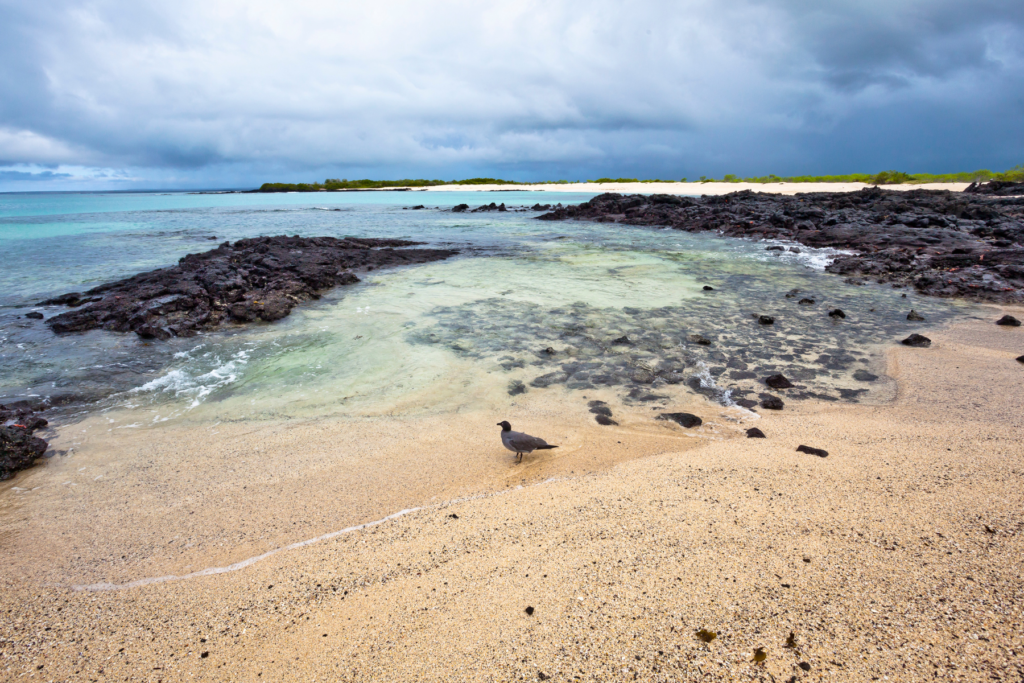
Both beaches are nesting areas for green sea turtles, which leave tracks in the sand to the back of the beach, especially from November to February. A wet landing and open area on the beach mean one can explore at leisure. Marine iguanas lurk on the rocks between the beaches; hermit crabs create tiny tracks in the sand.
Sombrero Chino
Only visited by the smallest yachts, Sombrero Chino is a beguiling site, a microcosm of Galápagos that lies just a couple of hundred metres off the southeast coast of Santiago. The islet is approached by a turquoise-coloured channel, one of the most picturesque anchorages in the archipelago. The whole island is a cinder cone with a steep-sided crown like a Chinese hat, hence the name. The sides are punctuated by minor spatter cones, lava tubes and patches of pahoehoe lava. Since these formations are extremely fragile, the trail is just a short one along the coast.
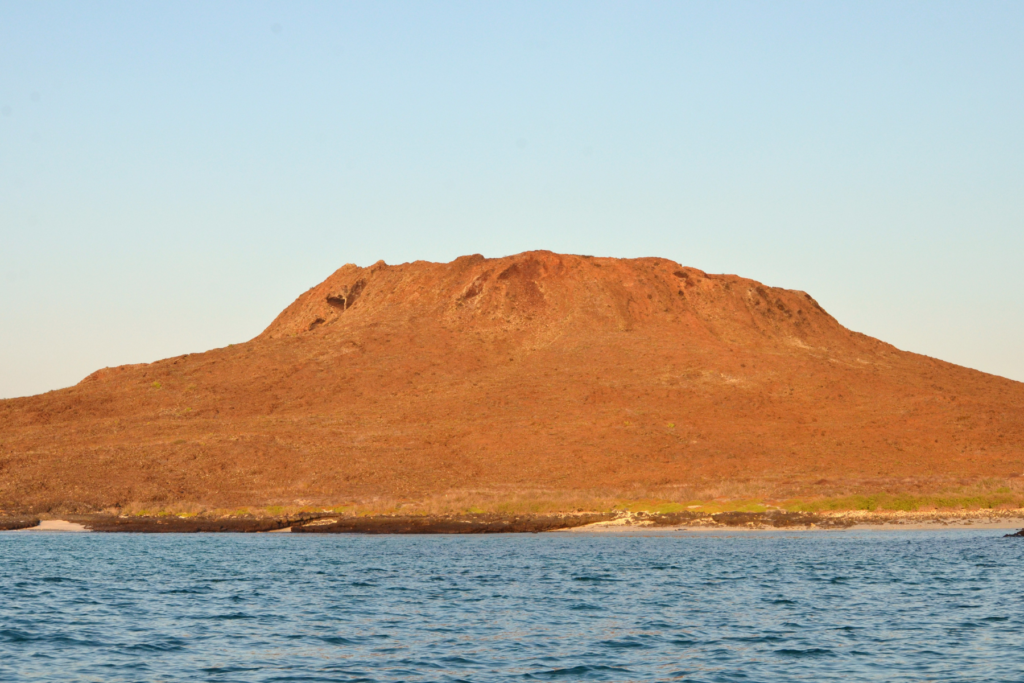
The channel is a good snorkelling site, but there is less current on the far side off Santiago. Penguins can be found here. In the deeper parts of the channel there may also be manta rays and white-tip sharks.
Snorkelling
Of course, there’s more to the underwater world than just scuba diving in the Galápagos. And you can see plenty without diving qualifications.
Most boats give plenty of opportunities to snorkel and the equipment can be loaned or hired on board.
During the cool season (May–November) you may like to wear a wetsuit, and again many boats have these for rent, but do check with your operator beforehand.
Snorkelling can be done from the shore for beginners or, for the more confident, from a dinghy (panga), where there is generally clearer water. Near the shore, you will see colourful reef fish like parrotfish or angelfish, sea lions, turtles and small sharks. The deeper ‘blue’ waters reveal schools of jacks, tuna, bigger turtles and rare hammerhead sharks.
More information
Interested in taking a dive trip to the Galápagos? Find out more in David Horwell and Pete Oxford’s guide to Galápagos wildlife:
